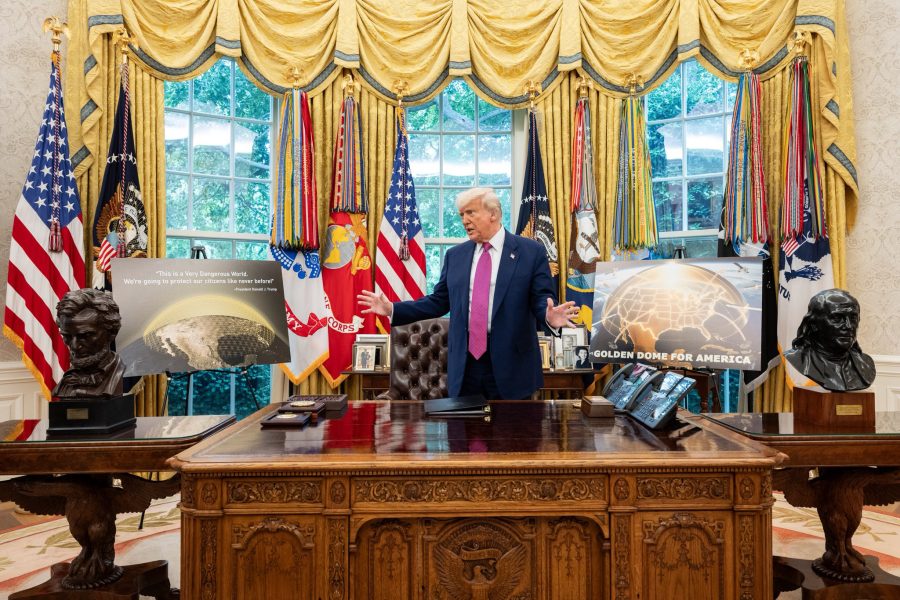NATIONAL HARBOR, Md.—Industry executives poised to compete for the Pentagon’s behemoth homeland missile defense initiative, Golden Dome, said the biggest risk to the project’s success is not technical but bureaucratic in nature.
“We need predictability of budgets,” Ed Zoiss, president of space and airborne systems at L3Harris, said during a Sept. 24 panel at AFA’s Air, Space and Cyber Conference, adding that without a multiyear funding outlook, “it becomes difficult to really get the momentum and envision the scale of what we need to do as an organization, as a country.”
Golden Dome emerged as a key defense priority for President Donald Trump during his first week in office. The vision is for a layered system of systems that can track and kill both traditional ballistic missiles and more advanced hypersonic vehicles. The Pentagon is still hashing out the details of the architecture and because of that, talk of the project during the conference was sparse. Despite releasing a request for space-based interceptor prototype proposals Sept. 18, Space Force officials declined to discuss Golden Dome or their role in it.
Trump has pegged the program’s cost at $175 billion over the next three years, though experts have estimated the price tag could be much higher depending on how the architecture takes shape. The American Enterprise Institute, a Washington think tank, estimated in a Sept. 12 report the 20-year cost could range anywhere from $252 billion to $3.6 trillion.
The Pentagon already has about $25 billion on hand for Golden Dome from congressional budget reconciliation legislation passed this summer. Though the threat of a government shutdown starting Oct. 1 looms, reconciliation money is not tied to the annual appropriations process and won’t be held up as Congress deliberates fiscal 2026 funding.
But company officials said their concern is not just about near-term funding, but longer term stability. Congress has not passed a budget on time in years, and the federal government operated under a yearlong continuing resolution in fiscal 2025. Further, the Pentagon hasn’t mapped out a five-year spending plan for Golden Dome—or the rest of the fiscal 2026 budget for that matter—which makes it hard for firms to plan ahead.
“This recurring theme of being saddled to execute these truly high-complexity, high-consequence missions that are inherently multiyear, with the constraint of the annual budget process and the uncertainty is just a fundamental incompatibility,” said Steve Arnette, chief operating officer of Amentum.
That uncertainty is particularly hard for smaller, non-traditional defense contractors to shoulder, according to Robert Fleming, president of Northrop Grumman Space Systems. If the government wants to draw from a diverse supplier base for Golden Dome, as it has claimed, those firms could struggle to adapt to programmatic changes or shifts in momentum tied to funding delays.
“We do collectively need to get going,” Fleming said. “If there are delays for any number of reasons, that’s gonna delay the ability of the industry to turn around and deliver capability. We can do a certain amount of leaning forward, but there’s only a certain amount of leaning forward that can be done.”


